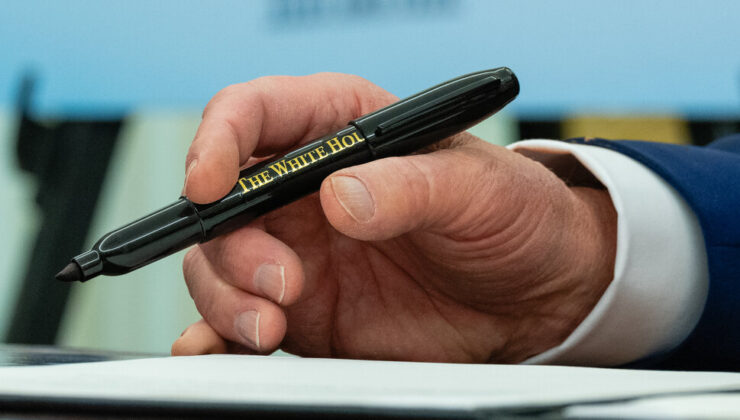



The first 100 days of a president’s term are often viewed as a critical period for assessing progress and setting historical benchmarks. Popularized by Franklin Roosevelt, this timeframe has become a standard measure of a president’s early effectiveness. However, when examining the whirlwind early days of President Trump’s second term, another milestone seems more fitting to consider.
Just last week, well ahead of reaching the 100-day mark, President Trump had already issued over 100 executive orders. A thorough review of these documents reveals the underlying assumptions, obsessions, and contradictions of his administration.
The Executive Order: Trump’s Governing Preference
President Trump has shown a marked preference for the executive order as his primary tool of governance. Despite having Republican majorities in Congress, he often chooses the decisive stroke of an executive order over the complexities of traditional lawmaking. The appeal is clear: rather than building legislative alliances, he can simply declare, “By the authority vested in me as president by the Constitution and the laws of the United States of America, it is hereby ordered” and follow with his directives.
A Double-Edged Instrument of Presidential Power
Executive orders embody a tension within presidential power. While they may project authority with a ‘because I say so’ aura, they lack the permanence and legitimacy of laws enacted by Congress. Future presidents can easily revoke them. Many of Trump’s second-term orders simply reverse those issued by President Joe Biden, which often undid the orders from Trump’s first term. Nonetheless, executive orders can have profound impacts and mark pivotal moments in U.S. history, such as the Emancipation Proclamation, the internment of Japanese Americans in World War II, and the desegregation of the military.
The Trump Administration’s Management Style
Reflective of the administration’s organizational methods, Trump’s first 107 orders, which span roughly 300 pages, can appear somewhat disorganized. Some present clear directives, such as setting specific tariff rates or limiting recognized genders on government documents, fulfilling pre-office promises. Many lack concrete actions, instead assigning new tasks to councils or task forces. An agency might gain new duties in one order only to face dissolution in another. The orders often mirror Trump’s campaign slogans, from ‘America First’ to ‘Make America Great Again’, without significantly expanding them. In style, these documents can oscillate from formal policy to campaign rhetoric to social media commentary, sometimes within the same text.
Despite, or perhaps due to this disarray, the orders serve an essential purpose: they define and extend Trump’s vision of the presidency, politics, and the Nation (with a capital ‘N’). They reflect the world as Trump perceives it and desires it to be, blurring the lines between high ideals and practical politics, between rhetoric and reality.
SİGORTA
2 gün önceSİGORTA
2 gün önceENGLİSH
12 gün önceSİGORTA
12 gün önceSİGORTA
12 gün önceSİGORTA
15 gün önceSİGORTA
17 gün önce 1
Elon Musk’s Father: “Admiring Putin is Only Natural”
11709 kez okundu
1
Elon Musk’s Father: “Admiring Putin is Only Natural”
11709 kez okundu
 2
7 Essential Foods for Optimal Brain Health
11615 kez okundu
2
7 Essential Foods for Optimal Brain Health
11615 kez okundu
 3
xAI’s Grok Chatbot Introduces Memory Feature to Rival ChatGPT and Google Gemini
11270 kez okundu
3
xAI’s Grok Chatbot Introduces Memory Feature to Rival ChatGPT and Google Gemini
11270 kez okundu
 4
Minnesota’s Proposed Lifeline Auto Insurance Program
9632 kez okundu
4
Minnesota’s Proposed Lifeline Auto Insurance Program
9632 kez okundu
 5
The Division 2: Battle for Brooklyn Expansion
8289 kez okundu
5
The Division 2: Battle for Brooklyn Expansion
8289 kez okundu
Veri politikasındaki amaçlarla sınırlı ve mevzuata uygun şekilde çerez konumlandırmaktayız. Detaylar için veri politikamızı inceleyebilirsiniz.